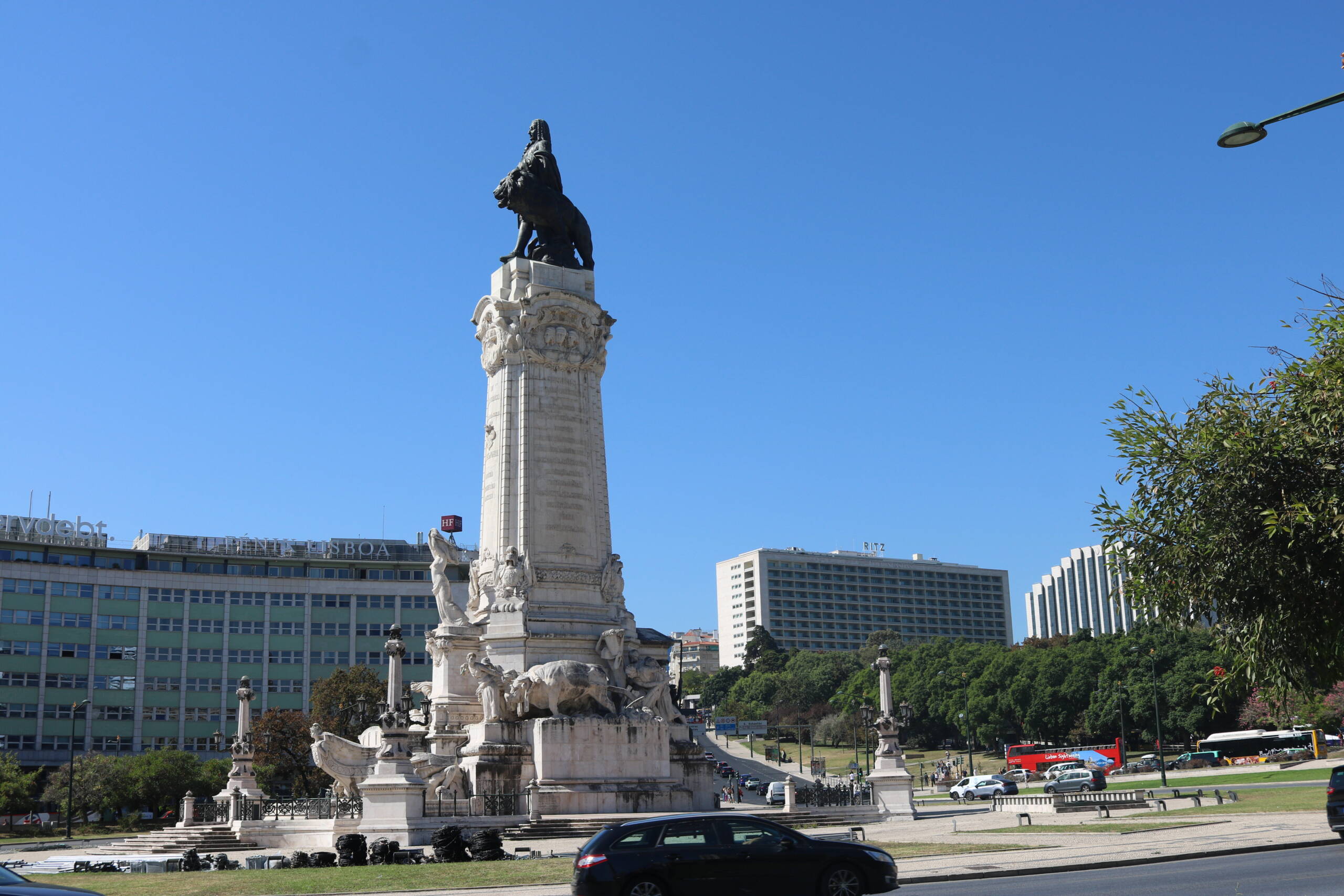At the very center of Lisbon’s modern life, where avenues converge and traffic never seems to stop, the Marquês de Pombal monument rises with an unmistakable authority. This square is not just a traffic circle—it’s a symbolic anchor for the entire city. The statue at the top shows the Marquês de Pombal, the prime minister who almost single-handedly reshaped Lisbon after the catastrophic 1755 earthquake and tsunami. His image astride a lion, stern and unyielding, captures the spirit of determination and rational reform that defined his era. The lion itself is more than an artistic flourish; it’s a visual metaphor for the raw strength and courage required to tear down ruins and build anew, transforming Lisbon into one of the most modern cities of its time.
The monument was inaugurated in 1934 and stands as both an artistic and political statement. At its base, sculpted allegories represent agriculture, education, commerce, and other pillars of society, echoing the Marquês’ reforms that touched every corner of Portuguese life. To walk around it is to circle through Lisbon’s own story of resilience. The square, called Praça do Marquês de Pombal, is also the gateway to Avenida da Liberdade—a grand boulevard modeled after Paris’s Champs-Élysées, lined with luxury shops, theaters, leafy promenades, and cafés. Strolling down this avenue, you feel Lisbon stretching itself toward the sea, a kind of elegant bridge between history and modernity.

Behind the monument lies Eduardo VII Park, a vast green space where you can climb gently uphill to a sweeping viewpoint over Lisbon’s downtown and the Tagus River. In spring and summer, the park hosts festivals and fairs, and in December it transforms with Christmas markets and lights. The combination of the formal gardens, long tree-lined paths, and the geometric patterns of the central lawn make it a favorite spot for both joggers and travelers in need of a quiet pause.
As for the surroundings, it’s impossible not to notice the hotels framing the square. On one side is the Ritz Lisbon, a landmark of discreet luxury, and across the way, modernist blocks of office and residential buildings remind you that this part of the city is both historic and bustling with daily business. Tour buses often stop here, and it’s a practical point of departure for anyone eager to explore Lisbon. From here, trams, buses, and even the metro fan out in every direction—making it one of the most connected spots in the city.
Travel tips: If you’re visiting, take the metro to Marquês de Pombal station—it drops you right under the square. Arrive in the morning when the light hits the monument dramatically, casting shadows that highlight the sculptural details. From here, you can either head downhill along Avenida da Liberdade toward Rossio Square, enjoying the gradual reveal of Lisbon’s old quarter, or turn the other way and climb into Eduardo VII Park for panoramic views. For photographers, the park offers a perfect frame: the monument in the foreground, the avenue stretching out behind it, and the shimmering river as a backdrop. If you’re keen on architecture, make sure to look up at the façades along the avenue, where you’ll find a mix of Belle Époque charm and modernist ambition.
And a small but useful tip: this area can be busy with traffic, so always use the pedestrian underpasses rather than dashing across the roundabout—Lisbon drivers are not always forgiving! Also, keep in mind that Avenida da Liberdade is one of the pricier areas for food and drink; if you want a more local bite, veer into the side streets that branch off the avenue, where you’ll find tucked-away taverns and cheaper cafés frequented by office workers.
This square may first appear to be just a chaotic intersection dominated by cars, but with a bit of time, you’ll see it differently. It’s Lisbon’s story written in stone and bronze, framed by green gardens and wide avenues, and it’s the perfect starting point for anyone wanting to feel both the weight of history and the rhythm of the city today.
Leave a Reply